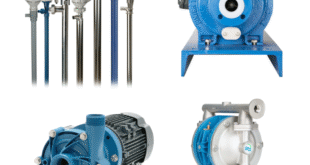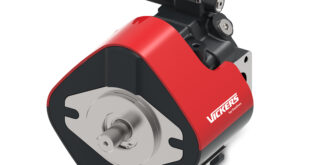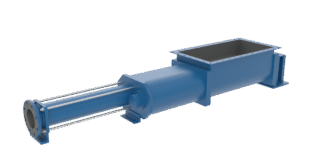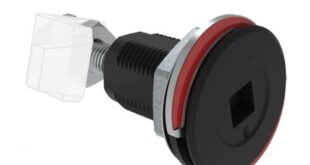Wayne Turtill provides some insight into how preventative and actual maintenance is done with smart VSDs
Today’s inverter drives are smarter than ever, able to look after themselves and a range of connected plant equipment such as fans, pumps, motors and conveyors. How then is this achieved?
Whatever industry you’re in, unscheduled downtime can be one of the biggest headaches.
From an unexpected stoppage on a conveyor line to a jammed pump in a water treatment works, the impact on productivity or service availability can be felt throughout an organisation. Then there is the associated cost of fixing the problem, all of which can quickly hit profitability, as well as damaging a company’s reputation.
Of course – automation products have long been able to help in this regard: Variable speed drives (VSDs) for example have always monitored parameters such as motor current and output torque, providing early warnings of impending problems with rotating plant equipment and machinery.

Today’s information-rich VSD displays and connectivity to HMIs mean that error codes are presented with meaningful troubleshooting information, so that engineers no longer have go running for manuals to diagnose and rectify a fault.
Going beyond routine fault codes current technology offers significant advances in plant monitoring and diagnostics, taking the uncertainty out of maintenance to help make unscheduled downtime a thing of the past.
In particular they can play a key role in moving from a regime of preventative maintenance to one of more cost-effective predictive maintenance.
The intelligent functionality of modern VSDs provides all the tools that are needed to reduce unplanned downtime, detecting problems in the likes of bearings, motors, pumps, fans and conveyors – as well as in the drives themselves – before they cause a failure.
With early warnings of impending failure and pro-active requests for servicing, engineering teams can make informed decisions about when to schedule any necessary maintenance.
Consider, for example, a drive controlling the motor on a conveyor line.
Unscheduled stoppages on conveyors that then halt the whole production line can be devastating for many businesses, with downtime frequently costing thousands or even tens of thousands of pounds per minute but many of the typical problems that will halt a conveyor line are easy to detect within the drive.
Common issues such as worn bearings for example cause friction and can be detected by a higher output current that is needed to overcome the increased load.
Conversely, a decrease in load – suggestive of wear in drive belts – can also be detected.
Such diagnostics are simple to set up, requiring minimal adjustment to parameters.
Different levels of monitoring and alarms can be defined to meet individual requirements, with local display on the drive itself or an HMI, or remote monitoring over a network.
In our conveyor example, all that needs to be defined are upper and lower limits for motor output current and the maintenance team will receive timely warnings of bearing or belt wear.
In fan and pump applications, the relationship between speed and torque can be indicative of impending problems. These characteristics start to trend away from the norm due to wear as a component approaches the end of its service life. It can also reveal problems such as blocked filters and pipes.
Again, warnings about issues before they impact on efficiency of operation gives engineers the best possible opportunity to schedule maintenance at the most convenient time.
Some VSDs use sophisticated algorithms to monitor fan efficiency, pump curves and performance, offering dedicated diagnostics functions for the likes of fan and pump applications.
For example, the Mitsubishi Electric FR-F800 series offers a ‘cleaning function’ (de-ragging), which provides timely warning of the build up of dirt and foreign matter on the impellers of fans and pumps.
Left unchecked, this build up will eventually stop the fan or pump motor completely and need an engineer to access the equipment to clean it, however, the drive is capable of running routines that solve the problem, not just highlight it.
With the cleaning function, this build up of dirt can be removed by repeating forward/reverse rotation and stopping the motor, eliminating costly extended downtime.
The function can be enabled manually on the display of an alarm or can be started automatically when an overload is detected.
If the process clears the problem, the load characteristics return to normal and operation can continue. If the problem isn’t cleared, an alarm can be triggered to alert the maintenance team, again giving them time to deal with the issue as and when is convenient, before equipment failure.
It is also possible to go further again, extending those diagnostics capabilities and bringing predictive maintenance in line with the digitisation of manufacturing, aligning it with the goals of Industry 4.0.
Mitsubishi Electric, for example, has integrated its Smart Condition Monitoring (SCM) technology into its inverters and is so taking the concept of drive-based condition monitoring to the next level.
The pre-configured, plug-and-play solution includes the FAG SmartCheck vibration sensor from e-F@ctory Alliance partner Schaeffler and combines it with the PLC functionality integrated within the drive to provide a complete drive-based solution for predictive maintenance.
This integrated approach to monitoring the health of individual assets combines local traffic-light indication of the asset through red, amber and green status lights on the installed SmartCheck sensor with more detailed analysis performed by the drive.
Within the VSD, operating temperature and vibration feedback from the SmartCheck sensor is combined with the monitoring of a full range of other external parameters, including speed, voltage and current information, with detailed diagnoses highlighted on the drive’s integrated display.
In the event of a change of state that indicates a deterioration of operating conditions or a likely impending failure, the system will display practical recommended measures to take locally via clear text messages or by forwarding them to higher-level systems. This means that maintenance personnel do not always need special experience or diagnostics expertise to be able to identify faults directly, take the necessary measures and schedule maintenance work as required.
As a result, downtime is minimised and system availability maximised – which in turn leads to further cost reductions. The net result is that system maintenance for critical assets can be planned in advance, resulting in a longer service life.
We can see then, that modern variable speed drives can make huge contributions toward monitoring the health of plant assets and minimising the risk of unscheduled downtime but what about the drives themselves?
Mitsubishi Electric has always offered peace of mind by using high quality temperature-resistant capacitors, continuously lubricated encapsulated cooling fans and double-coated control and circuit boards.
All of these components are chosen to give an estimated service life of 10 years, well in excess of JEMA guidelines.
In real world applications ten years is often the starting point, where the installed equipment will be expected to be maintained and run for decades. Can the drive help by predicting its own service life and requirements? Again, the answer is yes.
Integrated maintenance timers and ongoing critical component tests are all part of the drive’s self diagnostics routine, warning when parts are reaching the end of their service life so that individual parts or the drive itself can be replaced before faults occur.
All of these features increase the equipment availability providing predictive and condition-based maintenance functionality.
Perhaps the best news when it comes to condition monitoring of plant and equipment is that the essential diagnostics capabilities necessary for predictive maintenance are built into Mitsubishi Electric VSDs as standard, just waiting for the engineering team to set up the parameters and assign the alarms.
For those who want to go further, Mitsubishi Electric’s concept of drive-based condition monitoring and the self-diagnostics capabilities within its own drives, provides a platform where businesses can bring asset monitoring into an Industry 4.0 environment, helping to make unscheduled downtime a thing of the past.
Wayne Turtill is Product Manager for Drives and Servos at Mitsubishi Electric.
 Engineer News Network The ultimate online news and information resource for today’s engineer
Engineer News Network The ultimate online news and information resource for today’s engineer





